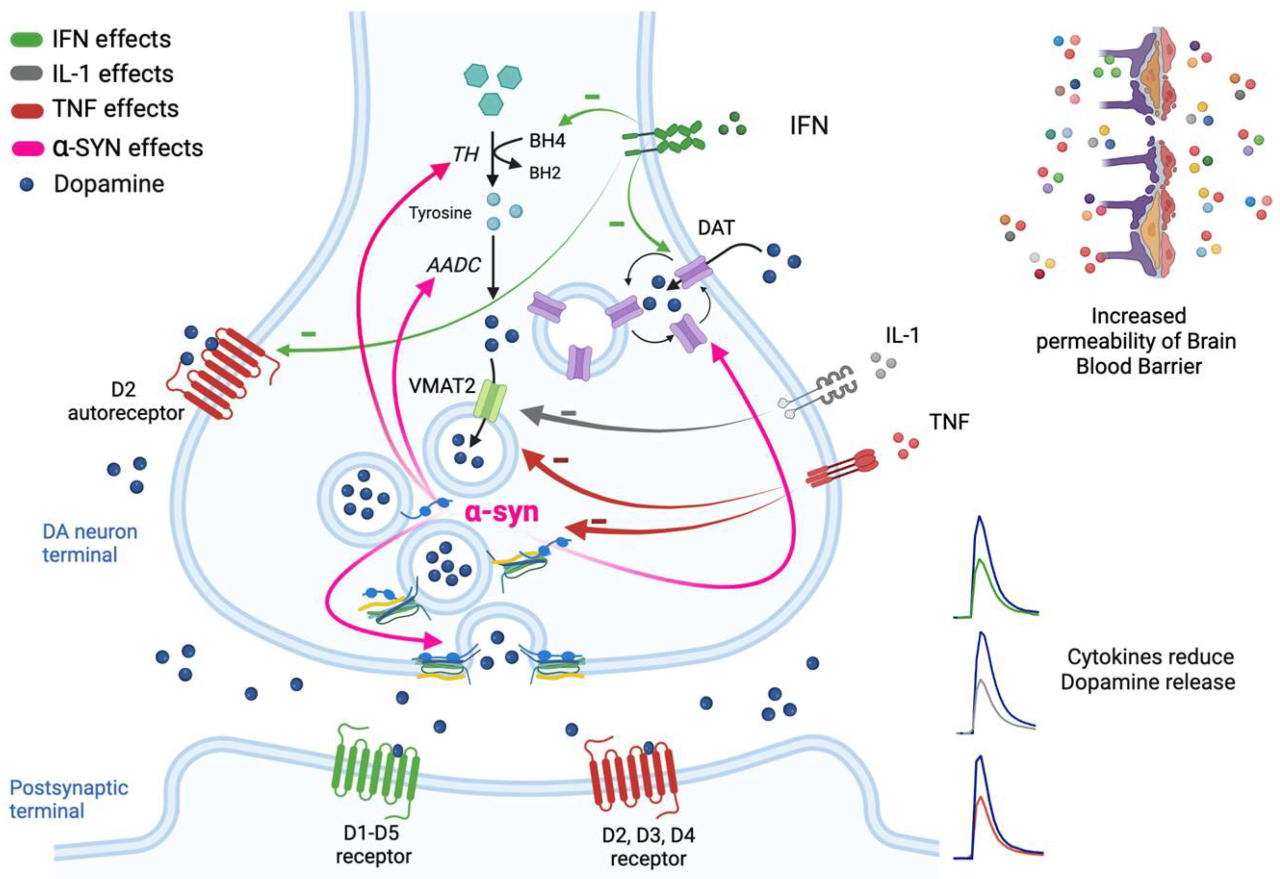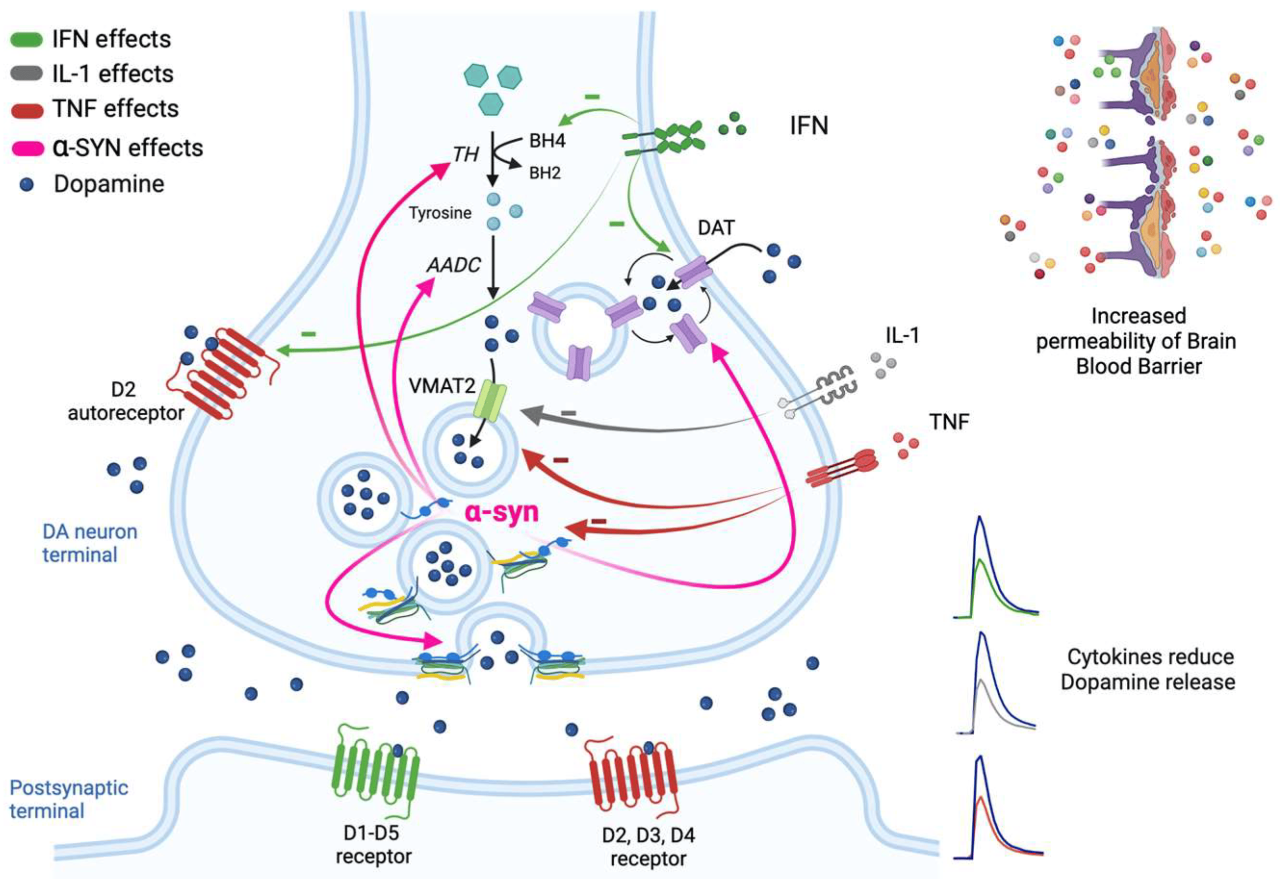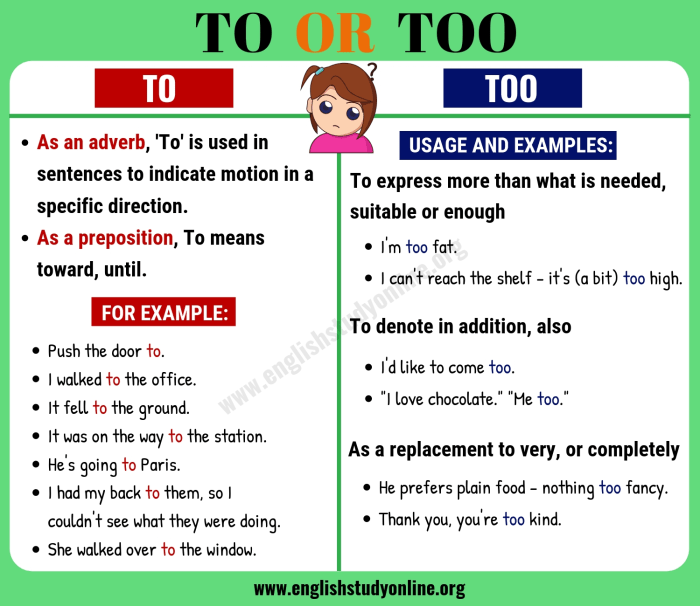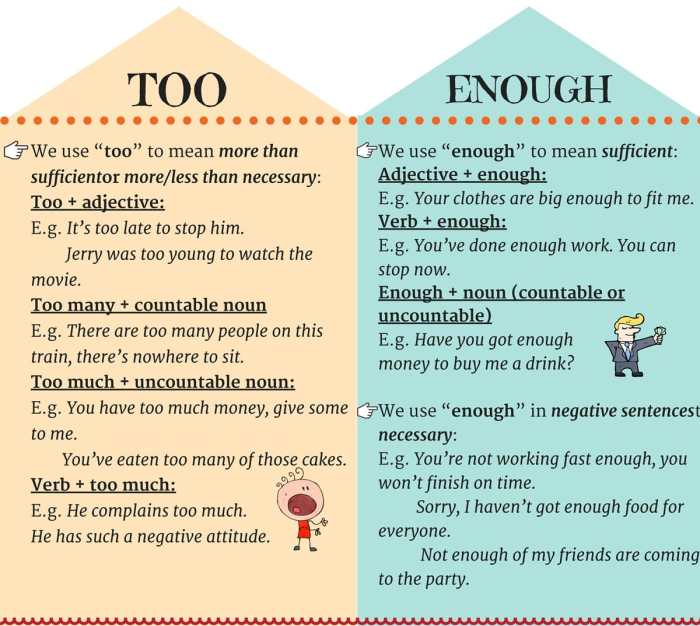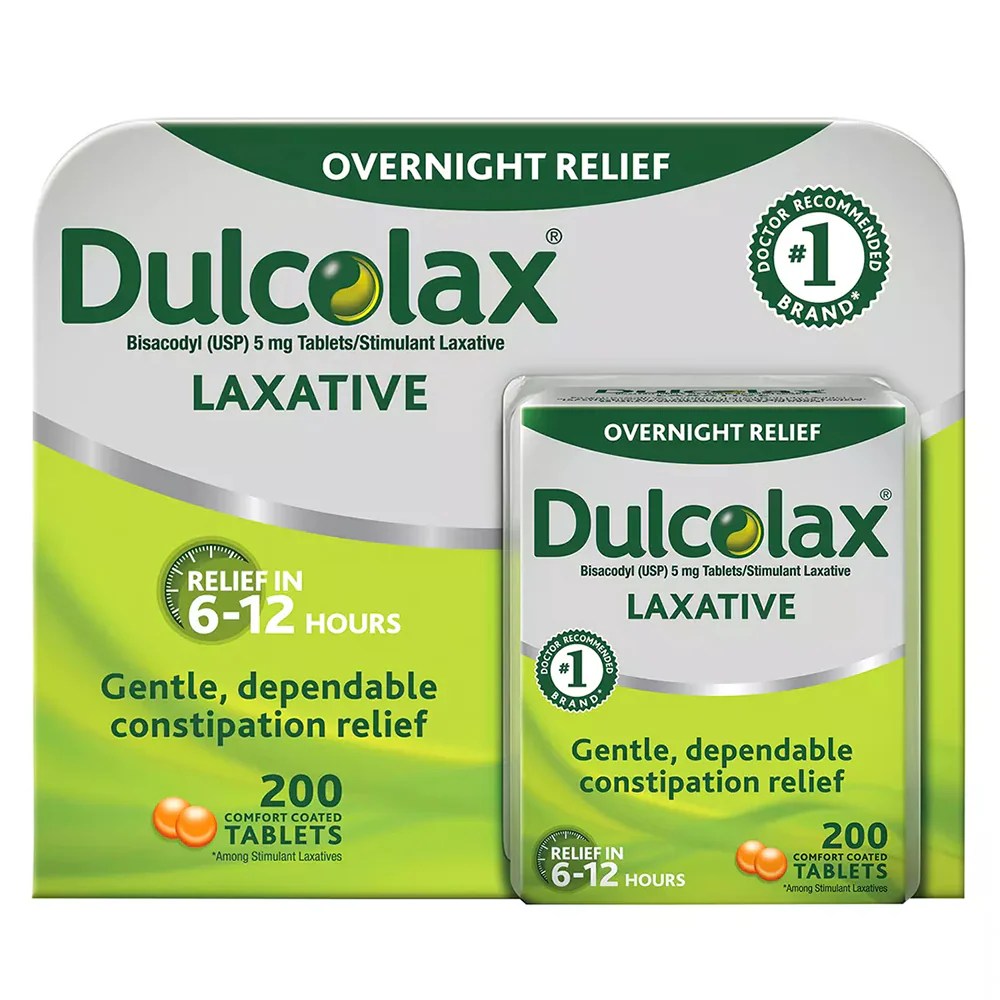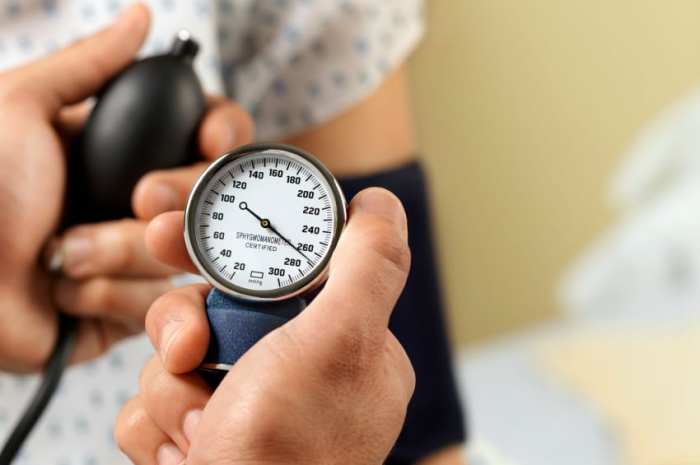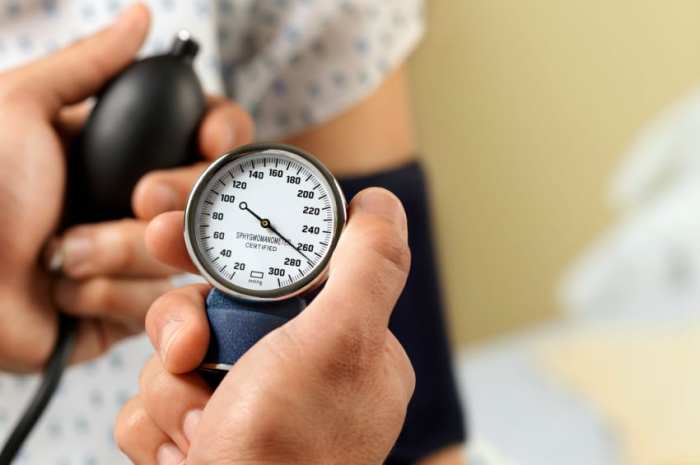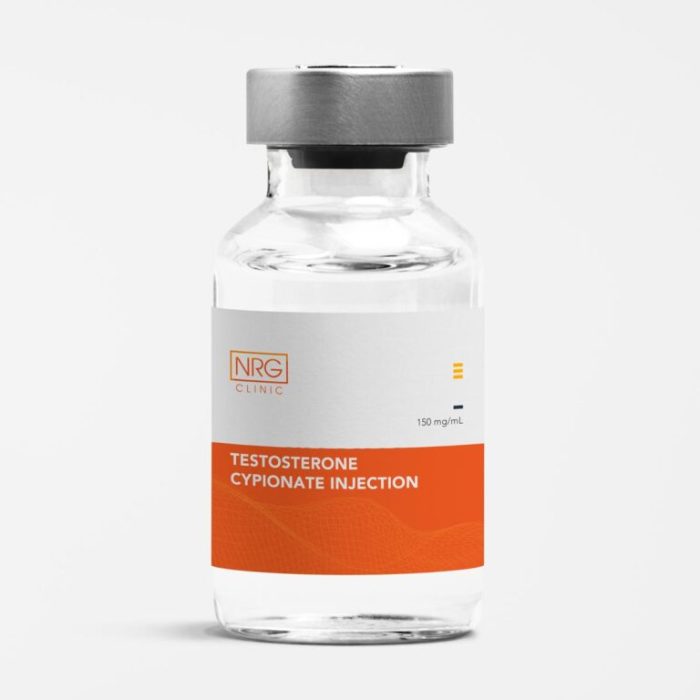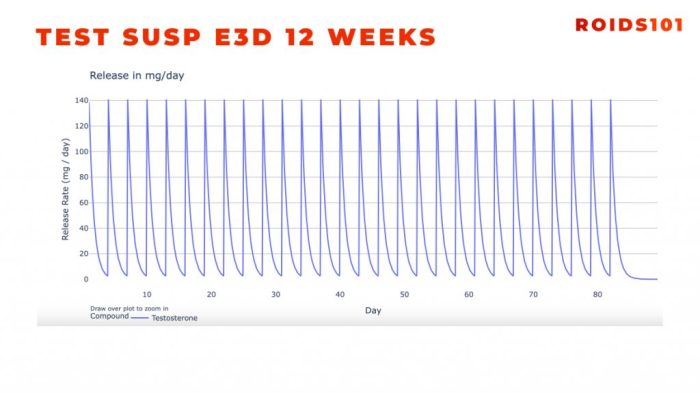Alcohol and blood pressure are intricately linked. This exploration delves into the complex relationship between alcohol consumption and blood pressure readings, examining how different types and amounts of alcohol affect cardiovascular health. We’ll explore the mechanisms behind these effects, from short-term fluctuations to long-term consequences. Factors like individual sensitivity, drinking frequency, and overall lifestyle will also be considered.
Understanding this connection is crucial for anyone concerned about their health and well-being, particularly those with existing cardiovascular conditions or looking to make informed choices about their alcohol intake. We’ll analyze the potential benefits and risks of moderate consumption, and the dangers of excessive alcohol use.
Alcohol and Blood Pressure
Alcohol consumption and blood pressure are intricately linked. While moderate alcohol intake might seem harmless, its effects on blood pressure can vary significantly, depending on individual factors and the type of beverage consumed. Understanding this relationship is crucial for maintaining cardiovascular health.The relationship between alcohol and blood pressure is complex, with both short-term and long-term effects playing a role. Short-term increases in blood pressure are often observed after consuming alcohol, while chronic heavy drinking can lead to sustained hypertension.
The mechanisms behind these effects are multifaceted and involve changes in the body’s response to vasoconstriction and blood volume regulation.
Mechanisms of Alcohol’s Effect on Blood Pressure
Alcohol’s influence on blood pressure is primarily due to its effect on the body’s blood vessels and hormones. In the short term, alcohol can cause the blood vessels to constrict, leading to a temporary rise in blood pressure. This effect is usually transient, resolving after a period of time. However, with chronic consumption, the body’s response can change, leading to long-term hypertension.
Additionally, alcohol can affect the body’s ability to regulate blood volume, potentially contributing to higher blood pressure. The precise mechanisms involved are still being researched.
Types of Alcoholic Beverages and Their Impact
Different types of alcoholic beverages have varying alcohol content, which plays a role in their potential impact on blood pressure. Beer, wine, and liquor each contain different amounts of alcohol, leading to potentially different effects on blood pressure.
Factors Influencing Alcohol’s Effect
The effect of alcohol on blood pressure is not uniform across individuals. Factors such as individual sensitivity, drinking frequency, and the amount consumed significantly influence the response. A person’s overall health, including pre-existing conditions like high blood pressure, and other dietary habits, also influence how alcohol affects blood pressure. For example, someone with a family history of hypertension might be more susceptible to elevated blood pressure after consuming alcohol compared to someone without such a history.
Summary of Potential Effects
| Alcohol Type |
Potential Effect on Blood Pressure |
| Beer |
Can increase blood pressure, especially with frequent and heavy consumption. |
| Wine |
Moderate consumption may have a minimal effect or even a slight decrease in blood pressure in some individuals, but heavy consumption can increase blood pressure. |
| Liquor |
Generally associated with a more significant increase in blood pressure, particularly with higher amounts consumed. |
Note: The table above provides a general overview. Individual responses can vary significantly. Consulting with a healthcare professional is crucial for personalized advice.
Moderate Alcohol Consumption and Blood Pressure
The relationship between alcohol consumption and blood pressure is complex and not always straightforward. While heavy alcohol use is unequivocally linked to increased blood pressure, the impact of moderate drinking is less clear-cut. Understanding this nuanced connection is crucial for individuals seeking to maintain cardiovascular health.
Ever wondered how alcohol affects your blood pressure? It’s a tricky relationship, and often a culprit in blood pressure spikes. Interestingly, some people find that applying magnesium oil on their feet, like using magnesium oil on feet , can help with various bodily issues. While this approach might not directly address alcohol-induced blood pressure fluctuations, it’s worth noting that a healthy lifestyle incorporating various methods could potentially support overall well-being, and ultimately help to manage blood pressure.
A key concept in this discussion is the J-shaped curve, which describes the potential link between alcohol intake and cardiovascular risk. This curve demonstrates that very low alcohol consumption might have some protective effects, moderate consumption potentially offers benefits, and heavy consumption consistently increases the risk of cardiovascular problems, including hypertension.
The J-Shaped Curve Relationship
The J-shaped curve hypothesis suggests a non-linear relationship between alcohol intake and cardiovascular health. Low to moderate consumption might be associated with a reduced risk of cardiovascular events compared to complete abstinence, while heavy drinking significantly increases the risk. This pattern isn’t universally observed, and individual responses can vary greatly.
Potential Benefits of Moderate Alcohol Consumption
Some studies suggest potential benefits of moderate alcohol consumption on blood pressure, although these findings are not definitive. It’s important to note that the potential benefits are not substantial, and other lifestyle factors like diet and exercise are likely to have a greater impact. These potential benefits might be attributed to alcohol’s effect on the vasculature, although more research is needed to fully understand the mechanism.
Comparison of Blood Pressure Responses
| Consumption Level |
Blood Pressure Response |
| Abstainers |
Baseline blood pressure, potentially influenced by other lifestyle factors. |
| Moderate Consumers (e.g., 1-2 drinks per day for men, less for women) |
Potentially slightly lower blood pressure compared to abstainers, but individual responses vary significantly. |
| Heavy Consumers (exceeding recommended limits) |
Increased blood pressure, significantly higher risk of hypertension. |
Confounding Factors
Several factors can confound the observed relationship between moderate alcohol consumption and blood pressure. These factors include age, pre-existing health conditions, diet, exercise habits, and genetic predisposition. These factors might influence blood pressure independent of alcohol intake, making it difficult to isolate the effect of alcohol alone.
For example, a person who is already at risk for hypertension due to a family history or high sodium intake might not experience the same blood pressure response to moderate alcohol consumption as someone with a healthier lifestyle. The effect of alcohol on blood pressure is influenced by the interplay of multiple factors.
High Alcohol Consumption and Blood Pressure
Excessive alcohol intake is a significant risk factor for elevated blood pressure, potentially leading to serious cardiovascular complications. Understanding the mechanisms behind this relationship is crucial for preventative measures and effective management of hypertension. This exploration delves into the detrimental effects of chronic high alcohol consumption on blood pressure and the associated cardiovascular damage.
Adverse Effects on Blood Pressure
High alcohol consumption, consistently exceeding recommended limits, can significantly elevate blood pressure. This effect is not negligible and can contribute to the development of hypertension. The increased pressure within blood vessels can strain the heart and blood vessels, potentially leading to long-term damage.
Mechanisms of Blood Pressure Elevation
Several mechanisms contribute to the rise in blood pressure associated with high alcohol intake. One key mechanism involves the disruption of the body’s natural regulatory processes. Alcohol acts as a vasodilator, initially lowering blood pressure by widening blood vessels. However, this initial effect is transient. Chronic alcohol consumption leads to a compensatory response, causing the body to constrict blood vessels, resulting in a sustained increase in blood pressure.
Furthermore, alcohol can impair the kidneys’ ability to regulate sodium and water balance, further contributing to elevated blood pressure.
Alcohol’s impact on the renin-angiotensin-aldosterone system (RAAS) plays a crucial role in these effects, potentially leading to long-term hypertension.
Long-Term Cardiovascular Damage
Chronic high alcohol consumption significantly increases the risk of developing cardiovascular diseases. The sustained elevated blood pressure can damage the delicate lining of blood vessels (endothelium), making them more susceptible to atherosclerosis, a condition where plaque builds up in the arteries. This buildup can restrict blood flow, increasing the risk of heart attacks, strokes, and other serious cardiovascular events.
Repeated instances of high blood pressure can also weaken the heart muscle, leading to heart failure.
Risk Factors Associated with High Alcohol Consumption and Blood Pressure
| Risk Factor |
Description |
| Frequency of Alcohol Consumption |
Regular and excessive alcohol intake increases the risk of elevated blood pressure more significantly than infrequent heavy drinking. The consistent stress on the cardiovascular system from repeated episodes of high alcohol consumption contributes to this heightened risk. |
| Amount of Alcohol Consumed |
The volume of alcohol consumed directly correlates with the likelihood of developing hypertension. Greater amounts of alcohol intake lead to more pronounced and rapid blood pressure elevation. |
| Individual Sensitivity |
Individual responses to alcohol vary, with some individuals being more susceptible to blood pressure elevation compared to others. Genetic predisposition, overall health, and other lifestyle factors can influence this sensitivity. |
| Pre-existing Conditions |
Individuals with pre-existing conditions, such as high cholesterol or diabetes, might be more vulnerable to the adverse effects of alcohol on blood pressure. These pre-existing conditions can exacerbate the risk of developing or worsening hypertension. |
Specific Populations and Blood Pressure
Alcohol’s impact on blood pressure isn’t uniform across all demographics. Individual responses vary significantly based on factors like age, sex, and pre-existing health conditions. Understanding these variations is crucial for tailoring personalized advice on alcohol consumption and blood pressure management. Different sensitivities to alcohol’s effects play a significant role in how it influences blood pressure.Alcohol’s effects on blood pressure can differ significantly depending on age, sex, and pre-existing health conditions.
For example, a younger adult may tolerate a higher alcohol intake without experiencing the same blood pressure elevation as an older adult. Women often exhibit a more pronounced blood pressure response to alcohol than men at similar consumption levels.
Impact on Different Age Groups
Variations in alcohol tolerance and blood pressure responses exist across different age groups. Young adults, for instance, might exhibit a greater ability to metabolize alcohol compared to older adults. This difference in metabolic rate influences the extent of alcohol’s impact on blood pressure. Furthermore, long-term alcohol use in younger adults can contribute to increased blood pressure risk over time, and it may interact with other factors influencing their blood pressure, such as diet and exercise.
| Age Group |
Blood Pressure Response |
| Young Adults (18-35) |
Generally, a more acute, temporary increase in blood pressure with alcohol consumption, but potential for long-term damage with sustained high consumption. Individual responses vary significantly. |
| Middle-Aged Adults (36-55) |
A potentially higher blood pressure response to alcohol compared to younger adults, potentially due to a combination of factors like age-related changes in metabolism and other health conditions. |
| Older Adults (56+) |
May experience a greater blood pressure elevation with the same amount of alcohol consumption compared to younger adults, often attributed to age-related changes in metabolism and cardiovascular health. Blood pressure response can also be influenced by other health conditions. |
Effects in Individuals with Pre-existing Conditions
Individuals with pre-existing health conditions, such as hypertension or diabetes, may experience a more significant blood pressure elevation with alcohol consumption. This is because alcohol can interact with the existing physiological mechanisms regulating blood pressure. For example, in individuals with hypertension, alcohol consumption may exacerbate the already elevated blood pressure.
Sex-Based Differences
Women often exhibit a more pronounced blood pressure response to alcohol compared to men at similar consumption levels. This difference may be attributed to various factors, including hormonal differences and differences in body composition.
Alcohol Tolerance and Individual Responses
Individual responses to alcohol vary significantly. Factors like genetics, body weight, and overall health can influence how the body processes alcohol and its impact on blood pressure. For instance, some individuals may have a higher tolerance to alcohol, while others are more sensitive. This variation necessitates a cautious approach to alcohol consumption, particularly in individuals with pre-existing conditions.
Blood Pressure Measurement and Alcohol Consumption
Accurately measuring blood pressure is crucial for assessing the impact of alcohol consumption on cardiovascular health. Understanding how blood pressure responds to alcohol intake, and the factors that influence those measurements, is vital for developing effective preventative strategies and treatment plans. This section delves into the methods used for blood pressure measurement, highlighting the importance of accuracy and the potential influences on those readings.Blood pressure readings are essential for monitoring individuals who consume alcohol, especially those with existing cardiovascular conditions or a family history of hypertension.
Changes in blood pressure can indicate potential risks, and consistent monitoring allows for early intervention and management.
Methods for Measuring Blood Pressure
Blood pressure is typically measured using a sphygmomanometer, a device that inflates a cuff around the upper arm. The cuff compresses the brachial artery, and the sounds of blood flow through the artery are detected by a stethoscope. The first sound heard is the systolic pressure, and the last sound heard is the diastolic pressure. These measurements are recorded in millimeters of mercury (mmHg).
So, we know alcohol can affect blood pressure, but did you know that a healthy lifestyle, like getting the recommended amount of daily steps, can help too? Studies show that maintaining an average steps per day, like the recommended average steps per day for good health, might help regulate blood pressure alongside other lifestyle factors. Ultimately, a balanced approach, including a healthy diet and regular exercise, is key to managing blood pressure effectively.
Modern electronic sphygmomanometers automate this process, providing readings directly on a display.
Importance of Accurate Blood Pressure Measurements
Accurate blood pressure measurements are critical in assessing the impact of alcohol consumption on an individual’s cardiovascular health. Inaccurate readings can lead to misdiagnosis, inappropriate treatment, and delayed intervention. Consistent, accurate measurements are essential for tracking trends and identifying potential problems. This allows for personalized recommendations and effective strategies for managing alcohol consumption and blood pressure.
Factors Affecting Blood Pressure Measurements
Several factors can influence blood pressure readings, and awareness of these factors is vital for obtaining reliable data. These include:
- Patient positioning and posture: Measurements should be taken with the patient seated or lying down, maintaining a relaxed posture. Sudden movements or anxiety can significantly impact the reading.
- Cuff size: An improperly sized cuff can lead to inaccurate readings. A cuff that is too small will overestimate blood pressure, while a cuff that is too large will underestimate it. Cuff size should be appropriate for the patient’s arm circumference.
- Patient’s emotional state: Stress, anxiety, or fear can elevate blood pressure, potentially affecting the reading. Ensuring the patient is calm and relaxed before the measurement is crucial for an accurate result.
- Time of day: Blood pressure naturally fluctuates throughout the day. Measurements should be taken at consistent times to allow for comparison and accurate trend analysis.
- Recent activity: Recent physical activity or exercise can temporarily elevate blood pressure. Patients should avoid strenuous activity immediately before the measurement.
- Medications: Certain medications can affect blood pressure readings. The patient should inform the healthcare professional about any medications they are taking, as this information can be crucial in interpreting the results.
Mitigation of Factors Affecting Blood Pressure Measurements
To mitigate these factors and obtain accurate readings, the following strategies should be implemented:
- Patient preparation: Ensure the patient is seated or lying down in a quiet, relaxed environment, free from distractions.
- Proper cuff size selection: Select a cuff that is appropriate for the patient’s arm circumference.
- Minimizing stress: Encourage relaxation techniques and provide a calm environment for the patient.
- Standardization of measurement times: Measure blood pressure at the same time each day for consistency.
- Avoiding recent activity: Instruct the patient to avoid strenuous activity immediately before the measurement.
- Medication history: Gather a complete medication history to account for potential drug interactions.
Simple Protocol for Measuring Blood Pressure in Individuals Who Consume Alcohol
This protocol provides a structured approach for measuring blood pressure in individuals who consume alcohol:
- Patient preparation: Ensure the patient is seated or lying down in a quiet environment, relaxed and free from distractions. Ask about recent alcohol consumption, time of last consumption, and the amount consumed.
- Cuff selection: Select a cuff appropriate for the patient’s arm circumference.
- Measurement procedure: Follow standard blood pressure measurement procedures, ensuring the patient is relaxed and the cuff is properly positioned.
- Documentation: Record the systolic and diastolic blood pressure values along with the date, time, and patient’s alcohol consumption history.
- Follow-up: Schedule subsequent measurements to track trends and evaluate the impact of alcohol consumption on blood pressure.
Alcohol and Blood Pressure: Dietary Considerations
Alcohol’s impact on blood pressure is multifaceted, and diet plays a crucial role in modulating this effect. A balanced diet, rich in specific nutrients, can significantly mitigate the potential rise in blood pressure associated with alcohol consumption. Understanding the interaction between dietary choices and alcohol consumption is key to managing blood pressure effectively.
The Role of Diet in Blood Pressure Regulation
A balanced diet is essential for overall health and plays a vital role in blood pressure regulation. This involves a variety of foods, including fruits, vegetables, whole grains, lean proteins, and healthy fats. A diet rich in these nutrients provides the body with essential vitamins, minerals, and fiber that contribute to maintaining healthy blood pressure levels. Conversely, diets high in saturated and trans fats, sodium, and processed foods can increase the risk of hypertension.
Impact of Nutrients on Blood Pressure
Certain nutrients directly impact blood pressure regulation. Potassium, for example, helps to counteract the effects of sodium, reducing the strain on blood vessels. Magnesium also plays a crucial role in blood pressure control by promoting vasodilation, or the widening of blood vessels. Calcium contributes to the strength and flexibility of blood vessel walls, indirectly impacting blood pressure. Adequate intake of these and other essential nutrients is critical for maintaining optimal blood pressure.
Beneficial Foods for Blood Pressure Management
A diet rich in fruits and vegetables is highly beneficial for blood pressure management. These foods are generally low in sodium and high in potassium, magnesium, and fiber, which are all beneficial for maintaining healthy blood pressure. Fruits such as bananas, oranges, and berries, as well as vegetables like spinach, kale, and tomatoes, are excellent choices. Whole grains, lean proteins (like fish and poultry), and healthy fats (like avocados and nuts) also contribute to a balanced and healthy diet.
Dietary Interactions with Alcohol
The interaction between diet and alcohol consumption can influence blood pressure responses. A diet rich in fruits, vegetables, and whole grains can help mitigate the negative impact of alcohol on blood pressure, while a diet high in processed foods and saturated fats can exacerbate this effect.
| Food Category |
Interaction with Alcohol |
| Fruits and Vegetables |
High in potassium, magnesium, and fiber; help counteract alcohol’s potential blood pressure-raising effects. |
| Whole Grains |
Provide fiber and nutrients that support healthy blood pressure regulation, reducing the potential impact of alcohol. |
| Lean Proteins |
Provide essential nutrients without excessive sodium or unhealthy fats; can contribute to a balanced diet mitigating alcohol’s effect. |
| Processed Foods |
High in sodium and unhealthy fats; can increase the risk of hypertension, especially when combined with alcohol. |
| Saturated and Trans Fats |
Can increase blood pressure and worsen the effect of alcohol consumption on blood pressure regulation. |
Alcohol and Blood Pressure
Alcohol’s impact on blood pressure is complex and multifaceted, influenced not only by the amount consumed but also by individual lifestyle choices. Understanding these lifestyle factors is crucial in managing blood pressure effectively, especially in individuals who consume alcohol regularly. This article delves into the combined effects of alcohol, diet, exercise, and stress management on blood pressure regulation.Lifestyle plays a significant role in modulating the relationship between alcohol and blood pressure.
Individual responses to alcohol vary, and factors like diet, exercise habits, and stress levels can either exacerbate or mitigate the effects of alcohol consumption on blood pressure readings.
The Role of Exercise in Blood Pressure Management
Regular physical activity is a cornerstone of blood pressure management. Exercise helps to lower blood pressure by improving cardiovascular health and reducing the strain on the heart. Aerobic exercises, such as running, swimming, or cycling, are particularly effective in lowering blood pressure. Strength training can also contribute to improved cardiovascular health and contribute to better blood pressure control.
Consistent exercise, combined with a balanced diet and stress reduction techniques, forms a comprehensive strategy for blood pressure management.
High alcohol intake can definitely impact blood pressure, often leading to a spike. But, strong bones are crucial for overall health, and learning how to increase bone density can significantly benefit your well-being. A balanced diet, regular exercise, and sufficient calcium intake are essential for healthy bones, and this guide provides valuable insights into effective strategies for optimizing bone health.
how to increase bone density Ultimately, managing alcohol consumption is key for keeping your blood pressure in check and overall health in good shape.
Stress Management and Blood Pressure
Chronic stress can significantly elevate blood pressure. The body’s “fight or flight” response triggers a surge in hormones, leading to increased heart rate and blood vessel constriction. Prolonged exposure to stress can damage blood vessels and increase the risk of hypertension. Implementing stress management techniques, such as meditation, yoga, deep breathing exercises, or spending time in nature, can effectively lower blood pressure by calming the nervous system and reducing the release of stress hormones.
Stress management techniques should be considered an essential component of a comprehensive blood pressure management plan.
The Combined Effects of Alcohol, Diet, and Exercise on Blood Pressure
The interplay between alcohol consumption, diet, and exercise significantly impacts blood pressure levels. A diet high in sodium, saturated fats, and processed foods can exacerbate the negative effects of alcohol on blood pressure. Conversely, a diet rich in fruits, vegetables, and whole grains can help to counteract these effects. Regular exercise can further mitigate the impact of alcohol consumption by improving cardiovascular health and promoting weight management, both of which are crucial for blood pressure regulation.
A balanced diet and regular exercise can minimize the negative impact of alcohol on blood pressure. For example, a person who consumes alcohol regularly and has a high-sodium diet coupled with a sedentary lifestyle is more likely to experience elevated blood pressure compared to someone who consumes alcohol in moderation, follows a balanced diet, and engages in regular physical activity.
Lifestyle Modifications to Mitigate Alcohol’s Impact
Adopting healthy lifestyle modifications can significantly reduce the negative impact of alcohol on blood pressure. These modifications include regular exercise, stress reduction techniques, and a balanced diet rich in fruits, vegetables, and whole grains. By incorporating these lifestyle changes, individuals can help to counteract the potential blood pressure-raising effects of alcohol consumption. For instance, an individual who reduces their alcohol intake, increases their physical activity, and adopts a healthier diet is more likely to experience a positive impact on their blood pressure readings compared to someone who does not make these lifestyle changes.
Recommendations and Precautions
Navigating the relationship between alcohol and blood pressure requires a cautious and informed approach. While moderate alcohol consumption might not pose significant risk for everyone, certain individuals and situations necessitate careful consideration. Understanding the potential consequences of irresponsible alcohol use is crucial for maintaining overall health and well-being.Responsible alcohol consumption is a key factor in mitigating the potential negative effects of alcohol on blood pressure.
This includes awareness of personal limitations, mindful consumption, and recognizing individual sensitivities to alcohol. It is essential to understand that even moderate drinking can impact blood pressure for some people, and individual responses vary.
General Recommendations for Responsible Alcohol Consumption
Understanding individual responses to alcohol is crucial for responsible consumption. Consult with a healthcare professional to determine appropriate limits, considering individual factors such as health conditions, medications, and family history. Establishing personal limits and adhering to them consistently is essential for responsible consumption. Consistent and moderate alcohol intake can be better managed when planned and monitored.
- Limit alcohol intake to recommended guidelines, if applicable, or avoid alcohol altogether.
- Be mindful of alcohol’s effects on blood pressure, noting individual sensitivities.
- Prioritize a balanced diet and regular exercise as part of a comprehensive health strategy.
- Avoid alcohol consumption if you have underlying health conditions that are exacerbated by alcohol.
- Never consume alcohol when operating machinery or engaging in activities requiring alertness.
Situations Requiring Avoidance or Minimization of Alcohol Consumption
Certain situations warrant complete avoidance or strict limitations on alcohol intake. Understanding these circumstances is vital for maintaining health and preventing potential complications. These include situations where alcohol could interact negatively with existing medical conditions, medications, or personal circumstances.
- Pregnancy and Breastfeeding: Avoid alcohol consumption entirely during pregnancy and while breastfeeding, as it can negatively impact fetal development and infant health.
- Certain Medications: Alcohol can interact with various medications, potentially leading to adverse reactions. Always consult with a physician before combining alcohol with any prescribed medications.
- Pre-existing Health Conditions: Individuals with conditions such as liver disease, heart conditions, or kidney problems should be particularly cautious with alcohol consumption. Consult with a healthcare professional for personalized guidance.
- Certain Life Stages: Adolescents and young adults are still developing, and alcohol can negatively impact their physical and mental health. Responsible consumption is essential for this demographic.
- Recent Surgery or Medical Procedures: Alcohol consumption may be restricted post-surgery or after certain medical procedures. Follow your physician’s instructions carefully.
Seeking Professional Medical Advice
Professional medical guidance is essential for individuals seeking to manage blood pressure and alcohol consumption effectively. This guidance is tailored to individual needs, encompassing factors such as medical history, current health status, and lifestyle choices.
- Regular Checkups: Routine checkups with a physician are crucial for monitoring blood pressure and overall health.
- Personalized Advice: A physician can provide personalized recommendations regarding alcohol consumption, considering individual health conditions and preferences.
- Medication Management: A physician can advise on appropriate medication to manage blood pressure, especially if alcohol consumption significantly affects it.
Potential Consequences of Ignoring Recommendations, Alcohol and blood pressure
Ignoring these recommendations can lead to various health complications. Consistent, excessive alcohol consumption can contribute to numerous health issues, including significant blood pressure increases.
- Elevated Blood Pressure: Chronic alcohol misuse can cause persistent high blood pressure, increasing the risk of cardiovascular problems.
- Liver Damage: Excessive alcohol consumption can damage the liver, potentially leading to cirrhosis and other liver-related illnesses.
- Cardiovascular Issues: High blood pressure due to alcohol consumption significantly increases the risk of heart attack, stroke, and other cardiovascular diseases.
- Weakened Immune System: Chronic alcohol consumption can weaken the immune system, increasing vulnerability to infections.
- Mental Health Problems: Excessive alcohol consumption can exacerbate or contribute to mental health issues.
Last Recap: Alcohol And Blood Pressure
In conclusion, the relationship between alcohol and blood pressure is multifaceted and influenced by numerous factors. While moderate consumption might present some potential benefits in certain individuals, excessive intake consistently poses significant risks to cardiovascular health. Understanding these nuances is essential for making informed decisions about alcohol consumption and maintaining a healthy lifestyle. Remember, seeking professional medical advice is always recommended when addressing health concerns.



